Site Topics
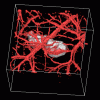
Finding Cancer: Can you hear the light?
Apr 4th
Finding cancers early allows for more effective treatment with the least side effects, so finding better ways to detect cancers is an important part of the fight. A new technique may help us “hear” where cancers are, allowing doctors to diagnose cancers more precisely than is currently possible. The technique, which is called photoacoustic tomography, takes pictures of sound waves that come from tissues when laser light is shined on the tissue. This is possible because different parts of the body absorb different amounts of light. When light is absorbed, it raises the temperature of the tissue, and the temperature More >
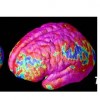
A new superdrug that fights pneumonia, pimples AND schizophrenia? Meet Minocycline.
Mar 26th
A cheap drug called Minocycline, which is normally prescribed for pneumonia and acne will be tested in a new trial to reduce the symptoms of psychosis in patients suffering from schizophrenia.
Schizophrenia is a mental disorder characterized by a breakdown of thought processes and by poor emotional responsiveness. According to the WHO the disorder affects around 0.3–0.7% of people at some point in their life, or 24 million people worldwide as of 2011. There is no general cure and the pharmacologic treatment of schizophrenia leaves much to be desired.
Now the National Institute for Health Research in the U.K. is funding a large research trial on More >
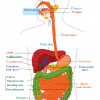
Guts against Diabetes
Mar 21st
For a very long time I have been using Diabetes as an example of a disorder that is caused by a mutation in the insulin gene. This mutation would stop the cells from making insulin, and a diabetic might need daily insulin injections to regulate their sugar levels properly. I don’t know what took me so long to realize that this was completely wrong. That while some diabetics are insulin dependent, it is because their insulin-producing cells of the pancreas are being completely destroyed by the immune system. And while they still aren’t sure about why these cells are being More >
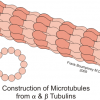
A Microtubule Model for Memory
Mar 20th
“Neurons that fire together, wire together.” This adage is a helpful reminder to students who take a course on memory and the brain. This rhyme captures our understanding that neurons have a self-reinforcing capability that links them, and that this capacity has some relation with how memory in the brain works. It makes sense that if the same groups of neurons are involved in processing some stimulus, strong and stable connections rather than weak and transient would be preferable. We use similar optimizations when we place people on a speed-dial list, bookmark a website, or create a playlist of songs.
In More >

Future Nobel Prize-winning cancer researchers?
Mar 19th
What did you do for your science fair this year? Or last year? Or 20 years ago?
Recently three high school students took out top honors in science fairs for their projects involving cancer research:
- Angela Zhang from California developed nanotechnology to destroy cancer stem cells and win the 2011 Siemens Competition in Math, Science & Technology;
- Shree Bose from Texas discovered a protein that could help prevent resistance to chemotherapy to take out first prize in the first International Google Science Fair; and
- Michigan native Nithin Tumma won the 2012 Intel Science Talent Search with his investigation of molecular pathways to compare breast cancer More >

Exhausting Our Lungs
Mar 7th
I have often wondered what impact the diesel fumes from yellow school buses might have on students. I know that I don’t like driving behind those buses because the fumes don’t smell good, so it seemed to me that there might be some health consequences. Others have wondered, too, and there is evidence that exhaust levels in buses can have health effects. However, it is hard to study this sort of thing, because finding people that are exposed to high levels of diesel in a controlled environment over long enough periods to measure the effects is challenging. Now, a study More >
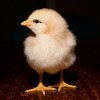
Just a Cluck Away from E. coli
Mar 5th
1 day-old chick
When people hear the name E. coli, even a passing familiarity brings about reactions of disgust and fear of food poisoning. This outright hatred of the common bacteria is, perhaps, a bit unwarranted, considering there are many different types of Escherichia coli. Not only are there harmful strains, but there are also many that are harmless to humans and some that are even helpful as well. We actually have our own E. coli that live in our intestines, take some of our nutrients and make essential vitamin K2 for us, which we cannot make for ourselves. Vitamin K is More >
Update Catching the Flu: Between Complacency and Fear
Feb 29th
A model of the influenza virus. (Artwork by Holger Guggi, copyright by Reingard Grabherr and Florian Krammer.)
Back in January, I blogged about how in December of 2011 the U.S. National Science Advisory Board for Biosecurity (NSABB) took the controversial step of requesting that the high-impact journals Science and Nature remove certain methodological details and the identity of the key mutations from the results to be published of two H5N1 avian influenza virus studies. The reason for this drastic regulation? The NSABB classified their results as “dual use” research – research that could be used for either beneficial or ill-purposed applications. They raised concerns about the More >

The Couch Potato Gene
Feb 23rd
Next to the rarely true excuse, “Of course I´m not too heavy… I just have heavy bones,” the couch potato gene could be the perfect excuse for those who find exercise something of a chore. It may not be an attitude problem: ‘I’m not lazy, it’s my genes!’
In investigating couch potatoes scientists have discovered why some of us have fun working out for hours while others lack energy and can barely summon the get-up-and-go to reach for the TV remote.
They believe they have identified the genes that produce an enzyme in our muscles during work outs called AMP kinase More >
